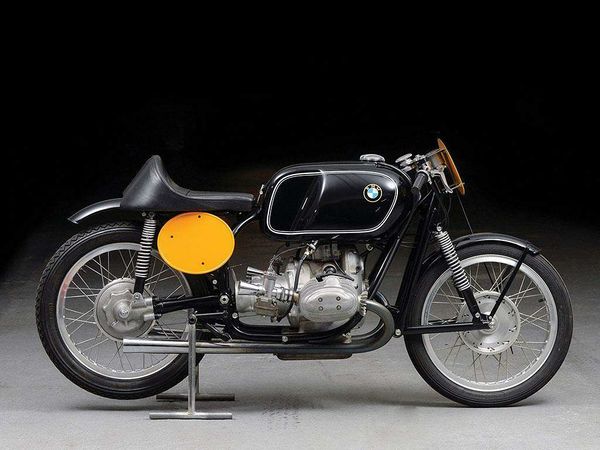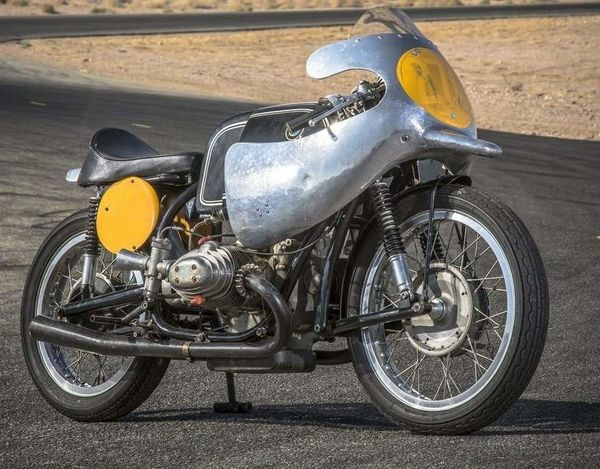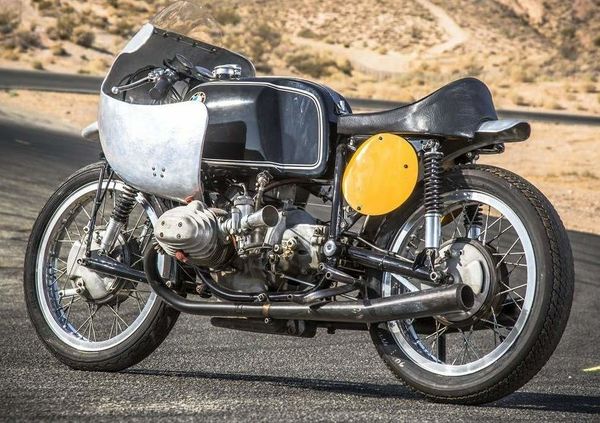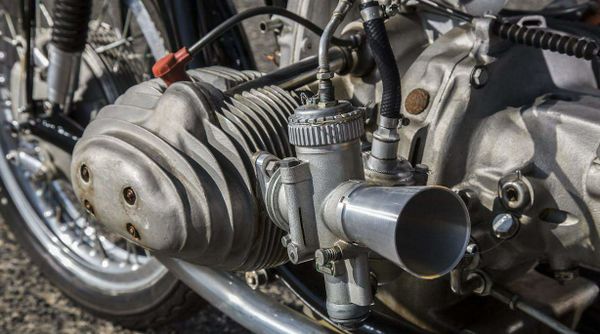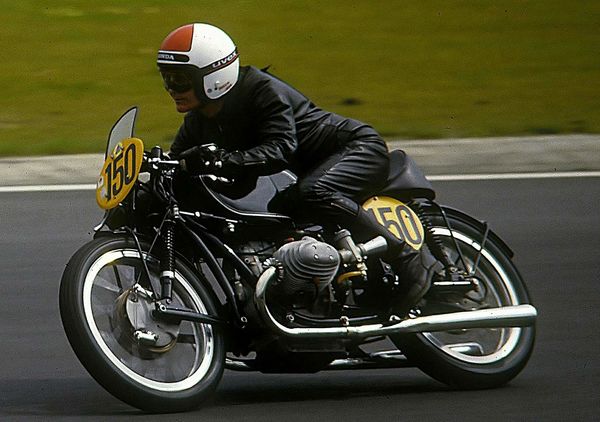BMW500 Rennsport
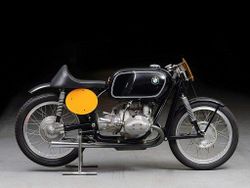 |
|
| Racing Bikes BMW500 Rennsport | |
| Class | Racing |
|---|---|
| Weight | |
| Manuals | Service Manual |
Photos[edit | edit source]
Overview[edit | edit source]
BMW 500 Rennsport
After supercharging was abolished on racing motorcycles, BMW had no choice but to modify its fine two-cylinder opposed-piston engines. And in 1951 the German company introduced the Mustang, which was similar to the old model that had won the 1938 world championship except for the absence of the supercharger and the introduction of a front-fork telescopic suspension. The supercharger was replaced by an air-feed with two carburetors. The BMW Mustang, however, proved not to be on a par with competing motorcycles. It could not stand up to the Italian multicylinder models or to the British single- and double-cylinders. As a result the Mustang was soon retired. It was replaced in 1953 by the 500 Rennsport model. The BMW 500 Rennsport had an altogether new engine. The dimensions of the cylinders were changed and the engine's power and weight were different. The opposed-piston system was maintained, as were the double single-shaft distribution and the carburetor feed. A great deal of work was done on the chassis, the Achilles' heel of the vehicles produced by BMW. The motorcycle was totally redesigned and looked very up-to-date. It had a double cradle and a swinging fork enclosing the transmission shaft. There were telescopic shock absorbers on the rear wheel, while the front wheel had fork suspension of the Earles type. The motorcycle's total weight came to barely 275 BMW Rennsport with carburetor engine, 1953 model pounds, which shows how carefully the two-wheeler was designed. After testing the prototype, BMW tried to introduce a new technical feature that same yearinjector feed. The BMW technicians settled on direct injection with a Bosch pump. The BMW 500 Rennsport was brand-new and proved to be highly competitive. Racers liked the motorcycle for riding on very fast circuits, where they could keep the throttle almost constantly open. The Rennsport never became a great success, chiefly because of problems with instability. The engine was certainly one of the most powerful around, but only a few racers, one of them being the legendary Zel-ler, managed to win races with it.
When the Rennsport engine was first mounted with a sidecar,
however, the results were excellent. All the problems of stability were
eliminated by the third wheel. In sidecar racing the BMW 500 knew no rivals.
Victories in sidecar racing gradually diverted BMW's attention from other races,
and in 1958 the company withdrew from racing two-wheelers altogether.
Motorcycle: BMW 500 Rennsport Manufacturer: BMW, Munich Type:
Racing Year: 1954
Engine: BMW two-cylinder, opposed-piston, 180°. Four-stroke cycle. Double
overhead single-shaft distribution, with bevel gear shaft. Direct injection with
Bosch pump. Displacement 493.9 cc. (68 mm. x 68 mm.)
Cooling: Air
Transmission: Four-speed block. Final transmission by cardanic shaft
Power: About 60 h.p. at 9,500 r.p.m.
Maximum speed: About 143 m.p.h.
Chassis: Continuous, double cradle. Front wheel, Earles suspension; rear,
telescopic shock absorbers
Brakes: Front and rear, central drum
Although not widely available, the most exclusive production BMW was the RS54 racer. (RS was short for Rennsport, German for "racing sport.") Designed as an affordable competitive racing motorcycle, primarily for German riders, the RS54 became available in 1953. Although only 24 were produced, the engine formed the basis for the highly successful sidecar racers that won 19 World Championships between 1954 and 1974. Many of the basic features of the RS54 were inherited from the prewar 500-cc Kompressor (a supercharged racing machine). This included the 66x72-mm bore and stroke, and the close-coupled twin overhead camshafts on each cylinder driven by bevel gears. There were only two main crankshaft bearings, and as the cylinders were offset, the bevel drive lined up with the exhaust camshaft on the right and the inlet on the left. The second camshaft coupled directly to the driven shafts. The cams were too close together to actuate the valves directly, so rockers were used, resulting in a wide included valve angle of 82 degrees. It was an expensive and complicated engine, but a beautifully constructed one. Although the factory racing machines were more highly tuned, the production RS54 had a low 8:1 compression ratio, and with twin Fischer-Amal 30-mm carburetors produced only 45 horsepower at 8,000 rpm. Compared to the production models of 1953, the R554 also had a new frame, with an oval-section top tube, duplex loops, and swingarm suspension front and rear. At the front, BMW fitted an Earles pattern leading-link-type fork. A swingarm with the drive shaft enclosed in the right fork arm took care of suspension in the rear. The RS54 weighed only 286 pounds (130 kilograms), but it was not an effective solo racer, limited by the high and wide engine and the excessive unsprung weight and steering inertia of the Earles fork This did not deter Walter Zeller, who finished second in the 1956 500-cc World Championship on a short-stroke factory version.
